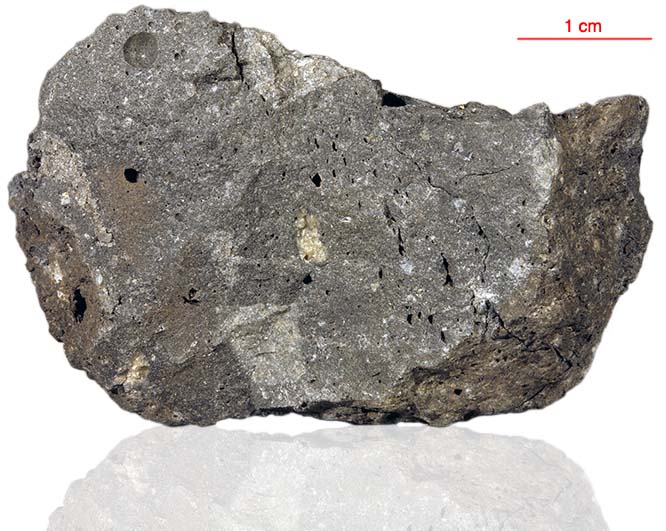
Fact sheet
72435 is a very fine-grained, clast-bearing impact melt with a micropoikilitic texture (typical of breccias from the large impact craters). Clasts up to 1 cm in size are visible in the sample. 72435 is comprised of 5-10 % clasts (1mm to 2cm) set in an extremely fine-grained, partially-clastic, crystalline matrix. The average grain size of the matrix is less than 50 microns with a micropoikilitic texture of intergrown pyroxene oikocyrsts and lath-like plagioclase and ilmenite. Olivine and ilmenite occur around the rims of the pyroxene oikocrysts. Cordierite and pink spinel have been found in this sample although they are not apparent in our thin section. Rotation 1 shows an extremely shocked pyroxene clast and rotation 2 shows a twinned feldspar clast (possibly K-feldspar).
The sample weighed 160.6 grams before analysis and a plagioclase clast has been dated at 3.86±0.04 billion years (Ar/Ar).
Further details of this and other Apollo samples are here: http://curator.jsc.nasa.gov/lunar/
Apollo 17, the final manned landing mission, had two objectives: to obtain samples of ancient rocks from the lunar highlands and to look for evidence of younger volcanic activity on the valley floor.
This small Collection contains material deriving from both periods, including igneous rocks around 4.3 billion years old from the lunar highlands as well as younger volcanic samples dating from about 3.6 billion years ago.
Apollo 17 was launched on 7 December 1972.






